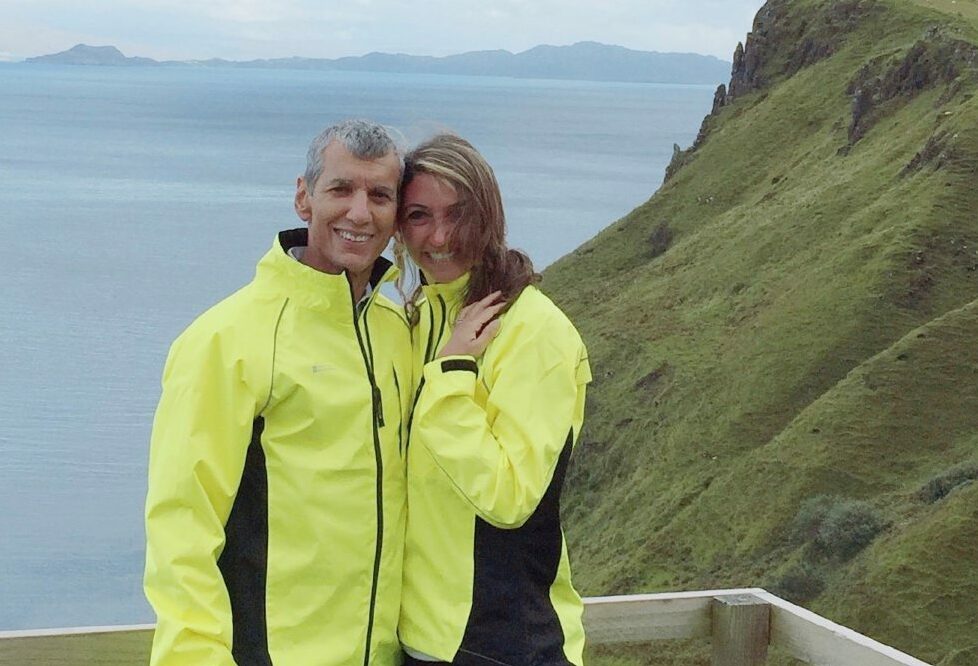
On a moodily overcast day on the Isle of Skye, the kind of day that somehow makes the dramatic landscape even more arresting than usual, Stephanie and John Cacioppo stare in awe at their majestic surroundings.
As the cold wind whips their faces, they turn to each other and smile. After what felt like years of waiting for Stephanie, and two failed marriages for John, the pair had finally found each other, and seemed now to be starring in their very own love story.
Yet, according to Stephanie’s new book – Wired For Love: A Neuroscientist’s Journey Through Romance, Loss, And The Essence Of Human Connection – it was not their hearts intertwining but their brains.
The celebrated neuroscientist specialises in researching the impact romantic love has on the brain, earning the nickname Dr Love early in her career. She has made remarkable discoveries, collecting data that suggests falling in love can actually make us smarter and sharper than we were before we met our perfect partners.
She explained: “When you are in love, yes, the most primitive functions and emotions are activated. Dopamine will be pumped into the feelgood circuits of the brain but also that same neurotransmitter, the dopamine, can boost you to think faster, feel better and to dream bigger as well.
“When you are in love your brain activates 12 areas that are important for compassion, creativity and conceptual thinking. By priming this love network, you can then ignite all the nearby areas that are involved in cognition.
“On top of that, you have a system in your brain called the mirror neuron system, which will be hyper-activated when you’re in love. That’s why you can think faster and you can anticipate your partner’s actions, as well as their emotions and intentions, thanks to this mirror neuron system. Yes, love can make you feel better but it can also make you think faster and be better.”
Despite her early acclaim within scientific circles, there was an awful irony at the heart of her romance-orientated career trajectory – at age 37, Stephanie had never been in love herself, and never expected to be. “It would make for good conversations at parties, the neuroscientist of love who was single,” said Stephanie. “I took pride in it and thought I was a more objective researcher. I wore my solitude like a badge of honour rather than something to feel guilty about.”
That all changed in January 2011 at a social neuroscience conference in Shanghai, where she met her future husband and celebrated neuroscientist, famed in his community for his work investigating the impact of loneliness on the brain.
The pair fell deeply for one another, and juggled their work schedules to make time for each other where and when they could, before Stephanie finally relocated from Europe to the United States to work with John at the University of Chicago’s Pritzker School of Medicine, where she remains the director of the Brain Dynamics Laboratory. Stephanie is positive that the impact of the love they had for each other on their respective brains made them better and more creative scientists.
It was not all work and no play, however, and Stephanie remembers the special holiday the pair shared embarking on a road trip in Scotland, culminating on the Isle of Skye. She said: “John and I loved Scotland. It brings back beautiful memories of my husband, and is close to my heart because of that.”
In 2018, Cacioppo passed away from salivary gland cancer aged 66. Devastated by his death, Stephanie wrote her new book as a tribute to her late husband.
“My husband was the love of my life, and still is the love of my life,” said Stephanie, the first female president of the Society for Social Neuroscience.
“My book is a tribute to him – it’s my love letter to my husband. He was my everything and I didn’t understand the beauty and the depth of love until I met him. He taught me what love really is. He showed me how to see love from the lens of humanity.
“On my journey, I’ve learned that the key to keeping John’s spirit alive and in my life was really being fearless and facing the pain of remembering him. I was afraid of the pain that would come by trying to embrace what I had lost, but once I did that, once I faced my fear, I found John all around me.
“Loving someone when they’re gone just means holding them closer, and keeping them in the part of your brain that feels like your heart.”

Enjoy the convenience of having The Sunday Post delivered as a digital ePaper straight to your smartphone, tablet or computer.
Subscribe for only £5.49 a month and enjoy all the benefits of the printed paper as a digital replica.
Subscribe